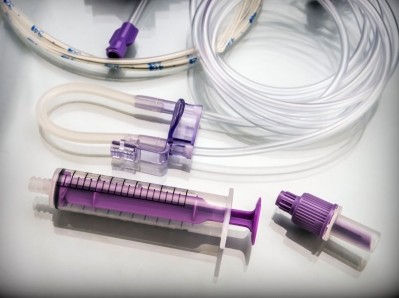Revolutionizing partner evaluations in pharma outsourcing: expert insights

To gain a deeper understanding of this complex landscape, OSP sat down with three industry experts from CluePoints: Francois Torche, Steve Young, and Patrick Hughes. They shared their perspectives on various facets of the industry, focusing on product development, regulatory frameworks, and the industry's branding and landscape.
Francois Torche (FT): Focusing on product development
How do you see emerging technologies like AI and machine learning supporting drug development?
FT: Emerging technologies such as AI and machine learning are revolutionizing drug development by enabling more efficient data analysis and predictive modeling. These technologies allow us to process vast amounts of data quickly, identifying patterns and insights that would be impossible for humans to detect. For instance, AI can help in the identification of potential drug candidates by analyzing biological data and predicting their efficacy and safety profiles. This significantly reduces the time and cost associated with drug development.
What are some of the key innovations CluePoints are bringing to market that address current challenges in the pharmaceutical and healthcare industries?
FT: CluePoints is at the forefront of innovation in the pharmaceutical and healthcare industries, particularly in the realm of Risk-Based Quality Management (RBQM) and centralized
monitoring. One key innovation is our advanced data analytics platform, which leverages AI to identify and mitigate risks in clinical trials. This platform allows for real-time monitoring of trial data, ensuring that any potential issues are addressed promptly. Additionally, we are developing predictive algorithms that can forecast potential trial outcomes, helping to streamline the decision-making process and improve overall trial efficiency.
Where do you see the next notable advancements on the horizon?
FT: The next notable advancements in drug development will likely come from the integration of multi-omics data, which includes genomics, proteomics, and metabolomics. By combining these diverse data sets, we can gain a more comprehensive understanding of disease mechanisms and identify novel therapeutic targets. Furthermore, the application of AI in personalized medicine will continue to grow, enabling the development of treatments tailored to individual patients' genetic profiles. This approach not only improves treatment efficacy but also minimizes adverse effects, ultimately leading to better patient outcomes.
Steve Young (SY): Focusing on regulations and the TUFTS activity
There is so much noise around RBQM and centralized monitoring, what is the latest evidence to demonstrate that RBQM is working and improving quality in clinical trials?
SY: The latest evidence supporting the effectiveness of RBQM comes from multiple sources, including recent studies and real-world applications. For instance, a comprehensive analysis of clinical trials that implemented RBQM showed a significant reduction in protocol deviations and data inconsistencies. Moreover, these trials experienced faster issue resolution times and improved overall data quality. By focusing resources on high-risk areas and using centralized monitoring to detect anomalies, RBQM ensures that trials are conducted more efficiently and with greater accuracy.
From your recent study on RBQM adoption, following your collaboration with TUFTS Ken Getz, executive director and research professor, Tufts Center for the Study of Drug Development, Tufts University School of Medicine, what most stood out from the results?
SY: Our study with Tufts highlighted several key findings about RBQM adoption. One of the most striking results was the broad acknowledgment of RBQM's benefits across the industry, yet there remains a significant gap in its full implementation. Many organizations recognize the potential for improved trial quality and efficiency, but practical challenges such as resource constraints and lack of expertise hinder widespread adoption. Another notable finding was the correlation between RBQM maturity and trial success rates; organizations with more advanced RBQM practices reported higher success rates and fewer trial delays.
What do you think the RBQM/RBDM space will look like in five years?
SY: In five years, I expect the RBQM/RBDM space to be much more integrated into the fabric of clinical trial management. Advances in AI and machine learning will make these practices more accessible and effective, enabling even smaller organizations to leverage these tools. We will likely see standardized protocols and best practices emerging, driven by
industry collaborations and regulatory guidance. Furthermore, the focus will shift towards proactive quality management, with predictive analytics playing a crucial role in identifying potential risks before they become issues, thereby ensuring smoother and more efficient trials."
What is the significance of the new CRADA between the FDA and CluePoints, what is it aiming to deliver and how will this benefit stakeholders?
SY: The Cooperative Research and Development Agreement (CRADA) between the FDA and CluePoints is a significant milestone for the industry. This partnership aims to develop and validate advanced RBQM methodologies that can be applied across clinical trials. By collaborating with the FDA, we can ensure that these methodologies meet regulatory standards and are widely accepted. For stakeholders, this means more reliable and efficient clinical trials, ultimately accelerating the development of new therapies. It also underscores the FDA's commitment to innovation and quality in clinical trials, providing a clear pathway for other organizations to follow.
Patrick Hughes (PH): Focusing on branding and industry landscape
CluePoints have unveiled a new brand narrative at DIA committed to ‘turning artificial intelligence into human intelligence’. Why this new approach and how do you see that narrative translated into outcomes?
PH: Our new brand narrative reflects our commitment to making AI-driven insights accessible and actionable for our clients. 'Turning artificial intelligence into human intelligence' means that we focus on translating complex data analytics into clear, actionable insights that can drive decision-making in real-time. This approach ensures that our clients can leverage the full potential of AI without getting bogged down by technical complexities. The outcomes of this narrative are evident in improved trial efficiencies, faster issue resolution, and ultimately, better patient outcomes. By demystifying AI and making it user-friendly, we empower our clients to make informed decisions that enhance the quality and success of their trials.
Where do you see the future ahead for RBDM, the top challenges, and the key strategies to best leverage benefits by the industry?
PH: The future of Risk-Based Data Management (RBDM) lies in its continued integration with advanced technologies and its acceptance as a standard practice across the industry. The top challenges we face include the need for more comprehensive training and education to bridge the knowledge gap, as well as the development of standardized protocols that can
be widely adopted. To best leverage the benefits of RBDM, the industry must focus on collaboration and knowledge sharing. By working together, organizations can develop best practices and guidelines that ensure the consistent and effective application of RBDM. Additionally, investing in technology and infrastructure that supports data integration and real-time analysis will be crucial."
What are the implications for CluePoints with the new investment by EQT?
PH: The investment by EQT represents a significant opportunity for CluePoints to accelerate our growth and expand our capabilities. With this investment, we can enhance our technological infrastructure, invest in R&D, and expand our global footprint. This will enable us to bring more innovative solutions to market and better serve our clients. Additionally, the backing of EQT provides us with the resources and strategic support needed to scale our operations and strengthen our position as a leader in the RBQM and RBDM space. For our clients and stakeholders, this means access to more advanced tools and services that drive better outcomes in clinical trials.
In conclusion, the insights from Francois Torche, Steve Young, and Patrick Hughes highlight the transformative potential of new methodologies and technologies in the pharmaceutical industry. By focusing on product development, regulatory frameworks, and industry branding, CluePoints says it is poised to lead the way in improving the evaluation and management of outsourcing partners, ultimately driving innovation and quality in clinical trials.



























